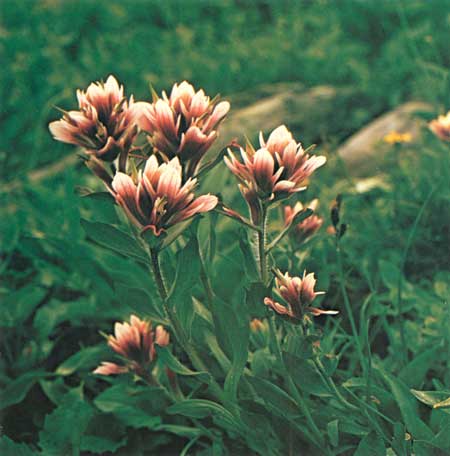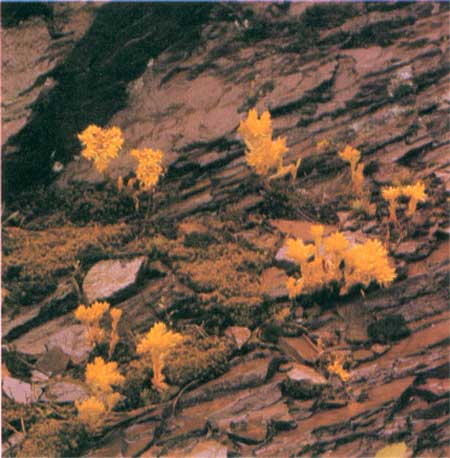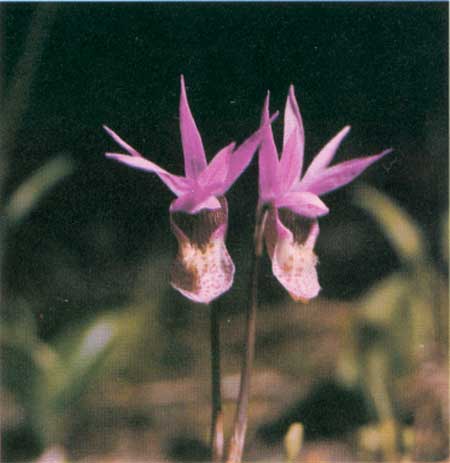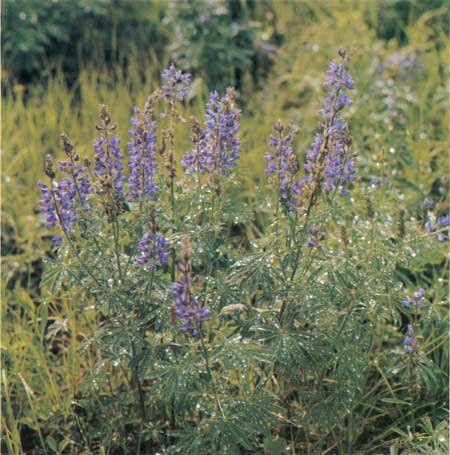|
GLACIER National Park |
 |
|
A Triumph of Many Colors Grassland, meadow, tundra, or any other area in Glacier suitable for plant growth and supplied with abundant sunlight produces an extravagance of wildflowers. This display of various shapes and colors is neither an accident nor a mere decoration of nature. Nor would Earth's recent explosion of mammal and bird species have been possible without the evolution of flowering plants. Two hundred million years ago, early in the Age of Reptiles, angiosperms (flowering plants) had not yet evolved. Plant reproduction still relied on spores and cones. Then, during the Cretaceous Period, the last sediments were being laid down in the inland sea that covered most of Montana. (It was these sediments that the ancient Precambrian rocks of Glacier's mountains later overrode, forming the Lewis Overthrust.) During this period the evolutionary miracle occurred: flowering plants—grasses, vines, shrubs, broadleaf trees, wildflowers—inherited the Earth. The timing was important. As Earth's tropical climate gradually changed to temperate extremes during this period, the domination of cold-blooded dinosaurs ended and the moisture-demanding coniferous forests that had covered the earth in green monotony began to shrink. Angiosperms provided a solution to the ecological void: grasses and forbs grew where trees no longer could. Most important, relationships evolved between this new class of plants and the relatively few species of insects then existing. Insects began to use the pollen of flowering plants; the angiosperms, in turn, evolved bright petals and nectar that exploited visiting insects for the plants' own reproductive purposes. This partnership allowed insects to diversify rapidly, evolving new, specialized forms such as bees, moths, and butterflies. As a result, predatory forms of insects and arachnids also rapidly diversified. The most dramatic change, however, involved warm-blooded birds and mammals, whose high rates of metabolism required high-energy fuels. Unlike gymnosperm seeds, which contain no protective covering, angiosperm seeds are surrounded by a fruit. The development of these highly nutritious seeds, and the attendant explosion of insect species, ensured survival of the newly evolved birds. As birds diversified into seed-eaters, insectivores, and carnivores, mammals, then uncertain little ratlike creatures darting among the feet of dinosaurs, began a rapid rise to dominance; grasslands promoted an explosion of herbivorous and carnivorous species. The evolution of angiosperms, and the animal revolution it made possible, came with amazing speed. Most significant, it was a vital first step upon which the meteoric rise of man depended.  Indian paintbrush is common at all elevations below tundra. It may be white, yellow, orange, pink or red. The actual flowers, inconspicuous and green, are surrounded by brilliantly colored bracts. Semi-parasitic on other plants, paintbrush is normally found growing in conjunction with other wildflowers; its roots steal sustenance from neighboring plants.  Yellow stonecrop, widely distributed in forest and scrub-forest zones, is one of the park's few plants having succulent leaves, an adaptation that helps it survive in such situations as dry, rocky outcrops.  The calypso orchid grows in the cool, shadowed forest where light is dim, it lives in partnership with certain fungi that exist about the orchid's roots and seem to help nourish it.  Silky lupine, a legume, has nitrogen-fixing nodules on its roots, thus allowing it to grow in nitrogen-poor soil. It is widely distributed in grassland and forest communities. |

|

|
|
|
|
Last Modified: Sat, Nov 4 2006 10:00:00 pm PST |


